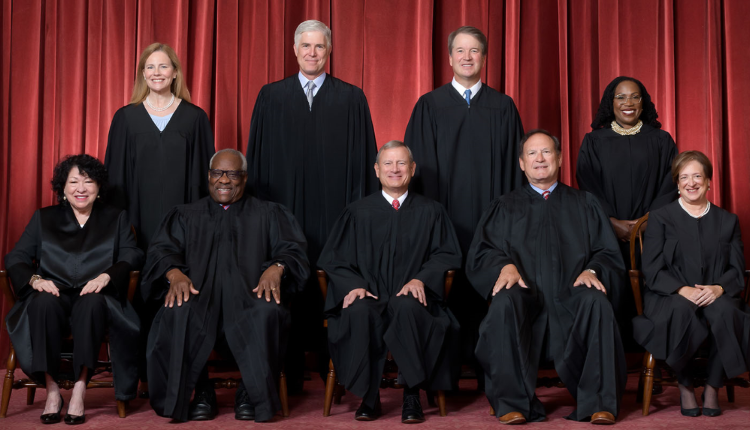Divorcing the Wealthy is Often a Matter of “Trusts”
I received a call recently from a colleague looking to refer a client for a divorce. Our firm had done estate planning for the client and spouse, thus we were not eligible to represent either party in a marital break up as they were both technically, our clients (plural).*
I was informed that this would be a complex matter because there was significant money and a lot of it was being held through a variety of trusts. So, the request was for attorneys who would be able to facilely navigate in those document-intense waters.
My response surprised even me. Assuming that both clients knew that a break-up was on the way, he might do both the clients and their prospective lawyers an immense favor if he secured permission to provide both clients with a summary of the trusts, together with their provisions and purpose. It should come with an agreement that he had joint consent to do this and that the clients would collectively or individually underwrite the costs.
When estate lawyers also have a divorce practice, they usually work in cases where the estate planning does not involve trusts. And in our world today trusts are devices that are employed for two reasons. The first has to do with beneficiaries who are disabled. The more common problem is grantors of the trust have “too much money.” What is the definition of “too much money?” It’s enough money that everyone’s unfavored uncle, Uncle Sam, wants a hefty cut of the inheritance pie. In 1916 when the federal estate tax was first passed, Unc asked for a modest 10% on any estate with a taxable value over $5,000,000. When President Trump came into office in 2017 it was 40% of amounts over $5,490,000; a fourfold increase on a much smaller sum when adjusted for inflation.
When the estate tax started to dig deep into the decedent’s pockets, circa 1920, rich folks began searching for ways to get wealth out of their hands so that they could participate in America’s universal pastime: tax avoidance. In response, the estate and financial planning communities began to invent a variety of devices to move wealth to the next generation while minimizing Uncle Sam’s cut. In the past century this has been a growth market in the legal industry as they currently serve 3,600,000 households who have net worth in excess of $5,000,000.
In 2017, a stop gap tax bill was passed that roughly doubled the amount that could pass to heirs without tax- to an indexed $12,000,000. But, that bill had a boomerang provision. In 2025 the tax resumes at $5,000,000 and starts at 40%. Thus, people who have more than $5 million in assets have plenty of reason to hustle as much money into a trust as they can before the boomerang comes sailing back 18 months from now.
So, we had a lot of trust planning among the wealthy in the past century and the $5 million and up club had incentive to double down on trust planning beginning in 2018 when the Trump tax revision was adopted.
Unfortunately, in the past decade we have also seen a marked increase in the number of people ages 50 and up who are getting divorced. And many of those people did estate planning based on their remaining married forever. The trouble is that when “forever” gets cuts short by a divorce proceeding, the beautifully crafted estate plan that so artfully deprived Uncle Sam of his 40% can get to be complicated.
The first complication is that when couples plan an estate together their lawyers rely on something called the unlimited marital deduction. That says a surviving spouse never has to pay tax on what the deceased spouse grants them until they, themselves, die. Thus, if Warren Buffet meets his maker with an estate of $120 billion, he can pass all of that on to his spouse with no tax due to the Treasury Department until she also meets her demise. Alas, once you are divorced, you have no spouse who qualifies as a surviving spouse and tax will be due.
Second, when couples sit down together with an estate planning lawyer and they have significant money (i.e., $5+ million), they typically have their houses and living arrangement fairly well settled. In fact, one of the devices invented by estate planners is something called the Qualified Personal Residence Trust (QPRT). This is an irrevocable (can’t be undone) trust that essentially takes the residence out of the ownership of the grantor husband/wife and claps that trapped wealth into a trust for the next generation subject to defined rights of occupancy by the couple who made the gift. But if the couple then splits and divorces, who’s going to be using the property. Who will the trust permit to come visit once the parties have split? In these trusts, it is often the next generation children who get control of the house via the trust and, as you know, they all hate dad’s second wife.
That was the easiest problem to present. But for trusts to be “tax efficient” (defer Uncle Sam’s preposterous taxes) the property must be placed in the hands of a third party “irrevocably.” When Mom and Dad are living comfortably on Shady Lane in Shadyside with the QPRT holding their $3 million house in Stone Harbor, where are they going to go now that neither is happy at home? Suddenly, we need liquidity to purchase at least 2 and perhaps 4 homes. Yet, there is only the house in Shadyside that can help fund the next set of purchases and it’s not sold yet. Another wrinkle is when the trust grantors set up the trust to distribute income only, or a fixed amount of income/assets premised upon common historic needs. The separation into two new households often brings new and larger needs. The woman dad met while looking for seashells on the beach in Florida insists that dad come there or contribute to her condo in Sarasota. Dad needs to join a club there but he’s not giving up Oakmont. Mom met an antiques dealer who does his buying in France. Is she supposed to stay home alone while her new love wanders the markets in Orleans and phones to tell her about his hotel overlooking the Loire while she views the Monongahela. The money is there but it’s under the control of a bank or other trustee who is supposed to be looking out for all beneficiaries, not just the one’s who graciously made the trust happen. The experience this writer has had is that trustees typically freeze up when these problems occur unless “all” the beneficiaries sign off. And why sign off when that woman in Florida is a creep and mom’s antique dealer is asking her to help him fund inventory?
So, back to my inquiry from my colleague the estate lawyer. What I suggested to him is that he summarize what’s in trust and how it can be accessed to support a couple now getting divorced. That means reviewing the trusts with a new set of eyes because the last set had one couple in two houses who once were happy eating their minimums at Oakmont. Realize as well that some of these couples are themselves beneficiaries of trusts or due to receive inheritances from their 90something parents. The Divorce Code says we are supposed to look at all available resources whether those are marital property or otherwise. This itself can be problematic because trust companies and their ilk are often very cagey when asked about what the trust owns and what the trust documents say. We have had trusts refuse to share that information even in cases where we represent the trust beneficiaries. The “trust” world and the “disclosure” world are just getting to know each other, and the early dates are often unpleasant and baffling to judges who are asking why the parties are not fully aware of their own resources.
There are times when what I proposed is an improvident path or perhaps, just a first step. In a case where the estate planner’s firm represents other family members, other family businesses or trusts, someone independent should be reviewing that estate planner’s work. Otherwise, you risk reading a report that says little more than: “I did great estate planning and saved bundles of taxes and nothing can be done to address these newfound facts and/or needs.”
Everyday people march into law firms throughout America to sign trusts and other estate planning documents intended to be high “tax efficient.” Their eyes gleam when the lawyer describes the federal taxes their plan has saved. Then their eyes glaze when the lawyer asks if they have read and are ready to sign the documents. Wills are bad enough. But if you have a sleepless night, summon our new friend ChatGPT and ask it to produce an irrevocable trust. You won’t last more than four pages before the angels of slumber will arrive at your door and take you quietly into that good night. And so, ….to bed.
* It is possible for one party to waive the conflict and permit one spouse to be represented by the lawyer or firm that prepared the joint estate plan. The wisdom of that is something the spouse not being represented by the firm in the divorce needs to ask about with his/her lawyer.






